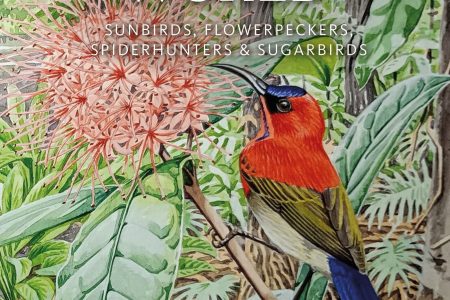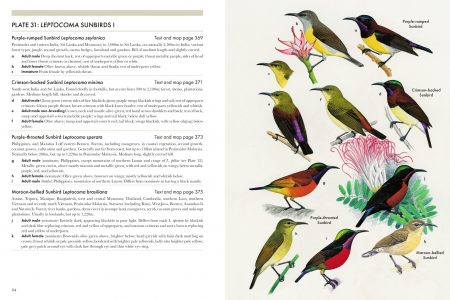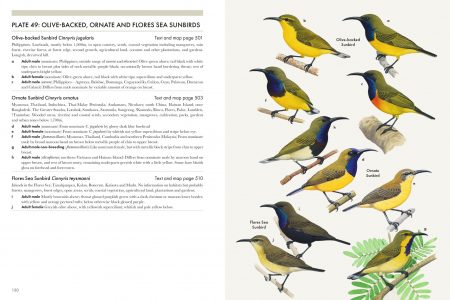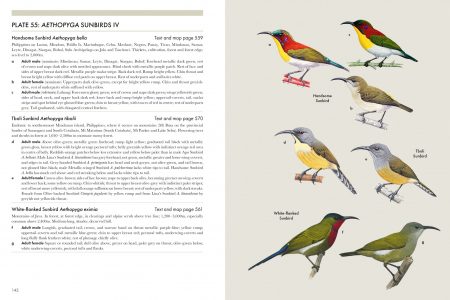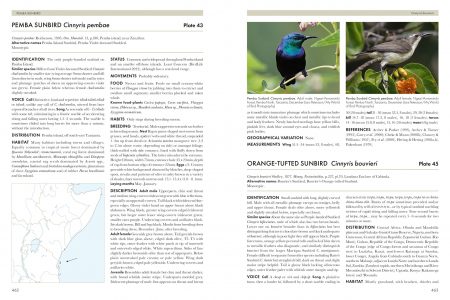An interview with Robert Cheke, lead author of ‘Sunbirds of the World’, published by Bloomsbury Publishing, in the Helm Identifications Guides series.
Robert Cheke is Professor Emeritus of Tropical Zoology at the Natural Resources Institute of the University of Greenwich and a Visiting Professor at Imperial College London’s Department of Infectious Disease Epidemiology. His work has frequently taken him to sub-Saharan Africa, where he has been able to follow his passion for sunbirds. The book is co-authored with the late Clive Mann and illustrated by Richard Allen. The second edition covers all 218 species and has been comprehensively updated from the first edition published in 2001.
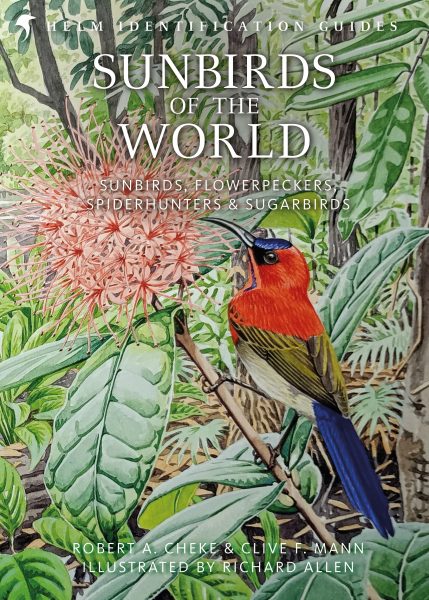
How did this book come about?
I became enthralled by sunbirds during my first visit to West Africa in 1967, after seeing Olive-bellied Sunbirds Cinnyris chloropygius flitting from Hibiscus flower to Hibiscus flower in Abidjan. Two years later I was lucky enough to join a university expedition to the Cherangani Mountains in Kenya, where I studied the thermoregulation and feeding ecology of montane sunbirds, research that I was allowed to use for my undergraduate degree dissertation at the University of St. Andrews. I then carried on looking for sunbirds whenever my work took me back to Africa. In the early 1990s, Christopher Helm was looking for someone to write a monograph on sunbirds and their allies for his series of bird identification books and he asked me if I would be interested in writing such a book. I agreed while pointing out that I could cope with the African species, but we would need someone else to write about the Asian species. After some false starts with other potential authors, Clive Mann readily agreed to help. He had recently returned from a long stay in Brunei and had the added advantage of extensive experience in East Africa as well. So, with Richard Allen on board to produce his excellent illustrations, and Nigel Redman’s encouragement from the publishers the first edition eventually appeared in 2001. By 2016, talk of a second edition was raised by Jim Martin at Bloomsbury Press, which had absorbed Christopher Helm’s business, leading to agreement to produce this second edition which finally appeared in June 2025, much delayed by Clive’s untimely death on 24 August 2022.
How many years was this book in the making?
Counting from the start of the first edition, 35 years! The second edition took 9 years after contracts were signed, six years overdue, regrettably.
What do you want to achieve with this book?
To highlight this beautiful and varied group of birds to help people to identify and appreciate sunbirds, spiderhunters, sugarbirds and flowerpeckers. Also, to bring the first edition up-to-date with new discoveries, new illustrations by Richard, photographs of all species (including of both sexes in dimorphic taxa) and to provide new distribution maps showing, for the first time, where different subspecies occur.
Is there a fun fact or something amazing you learnt during the writing of the book?
Nestlings of the Purple Sunbird Cinnyris asiaticus have been recorded as being eaten by Praying Mantises Mantis religiosa! A rare example of an invertebrate as predator of a vertebrate.
Were there any memorable moments during the course of writing this book?
The privilege, in the Natural History Museum at Tring, of handling numerous exquisite specimens collected by Alfred Russel Wallace.
How did you go about sourcing the amazing collection of images in the book?
Richard Allen painted and drew the extra illustrations needed for the second edition, including the fantastic cover pictures. I had a few photographs of my own including those of some specimens that lacked pictures of living birds. We were gifted many images by generous friends of both me and Clive. Furthermore, numerous correspondents provided their pictures gratis. Many of the latter were sourced from trawling through the pictures in the online versions of Birds of the World. The remainder were obtained from commercial sources, with much help from Bloomsbury’s Katy Roper who guided me through the production process with utmost professionalism. The new maps were skilfully produced by the publisher’s Julie Dando from my sketches.
In the book, you refer to two undescribed species of sunbirds. As of this point in time what is the status of species awaiting description. Have more been added to the list pending description?
Nothing more to report yet.
In the book, for the taxonomy you followed the fourth edition of the Howard and Moore Complete Checklist of the Birds of the World revised in 2014. In June 2025, AviList was published which unifies the Clements, IOC and BirdLife checklists. Are there any noteworthy changes you would highlight in terms how of it will impact the book?
When we signed the contract to write the second edition in 2016, the 2014 version of Howard & Moore was the state-of-the-art taxonomy, so Clive and I opted to follow it subject to a few modifications of our own. As time went on and the new bird lists emerged it became apparent that it would be a retrograde step for us to use one of the new versions in terms of yet more time lost changing things, so we stuck with our original decision. The main impacts will involve vernacular names and a few splits that we disagreed with, plus some generic alterations and the usual bickering about what a species actually is. No-one really knows!
For anyone who wishes to pursue this topic more, are there any online resources you would recommend?
Cornell’s Birds of the World (Birds of the World – Cornell Lab of Ornithology), but it is behind a pay-wall, and for vocalisations the admirable xeno-canto (xeno-canto :: Sharing wildlife sounds from around the world).

